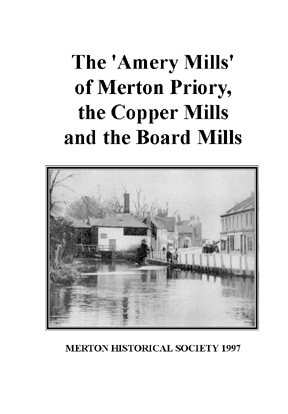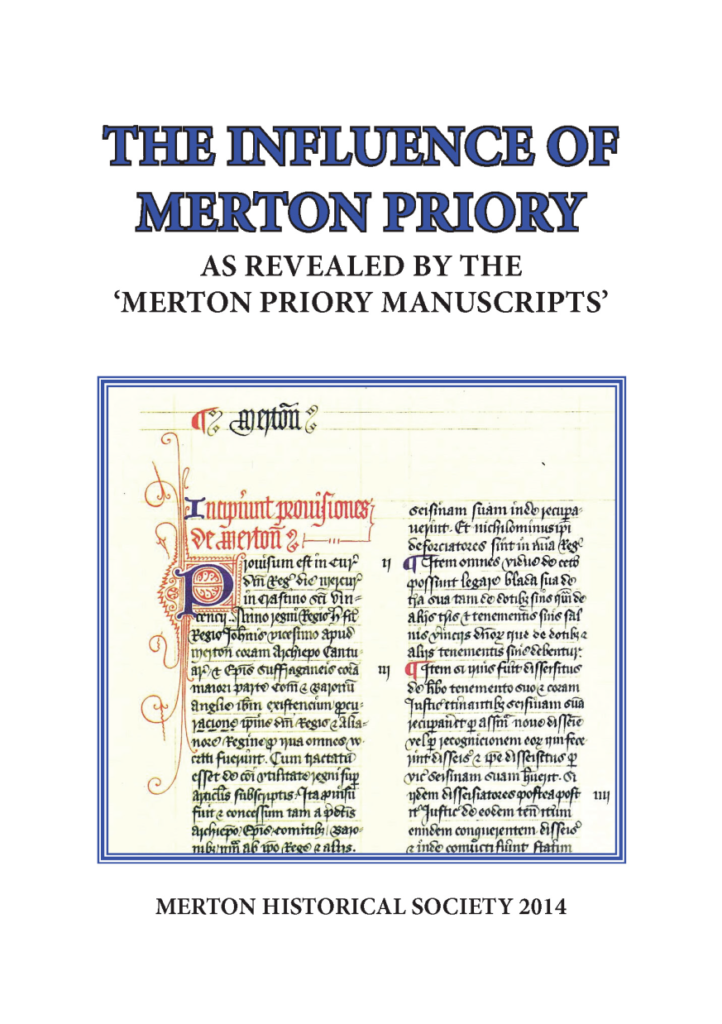Publications
Recruitment to the Armed Forces in Mitcham 1522-1815

In this study Eric Montague looks at the impact of war and the threat of invasion on Mitcham over a period of 300 years, with particular emphasis on recruitment to the militia. The text is in four chapters, covering the Tudor period, the Stuarts and the Commonwealth, the eighteenth century and, much the longest, the Napoleonic Wars. Eric has used primary sources where they exist, and the booklet includes among its many illustrations reproductions of a variety of documents.
Reminiscences of Park Place

Park Place, now a restaurant, is an 18th-century house, once used by the News of the World as the clubhouse for their sports ground.
George Nash became a groundsman there in the 1920s and remained for over 40 years. His recollections of the house and grounds date back to 1919.
The changes that had taken place in the 60-odd years that George Nash had known the house and its grounds were very great. The conversion of Park Place from a gentleman’s residence to a clubhouse and sports ground in the 1920s had necessitated quite drastic alterations, but many of the old outbuildings, like the stables and the coach house, survived until, damaged by a flying bomb, they were demolished after the war. The mid-Georgian wing of the house, once the domestic quarters, also sustained damage during the Blitz, but was repaired.
Some Memories of Merton
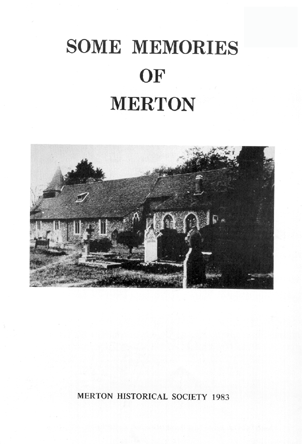
“It was on a fine Sunday evening in the early autumn of 1884 that I first saw Merton”. Thus began the reminiscences of an anonymous lady, first published in the parish magazine of St Mary’s Church, Merton, in 1941, and reproduced here by permission.
Some Memories of Tower Creameries, Mitcham
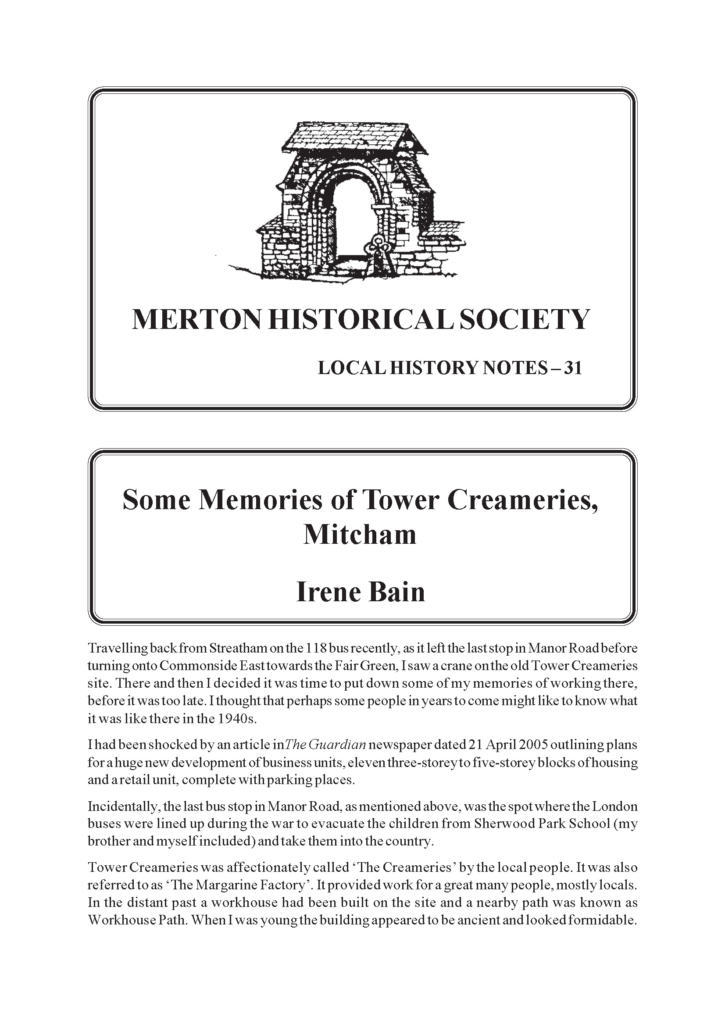
Stirred by the sight of a massive redevelopment on the site of the Tower Creameries, Irene Bain has recorded her memories of working there in the 1940s. After a short spell with C&A Modes in Oxford Street, she began at the Creameries as a messenger girl in 1944. Her duties took her into almost every department and office, and her memoir takes us by the hand and gives us a guided tour of the entire premises. This is far from a mere list of rooms, as it is illuminated by deft sketches of the people who worked in them. This includes all three directors, who were obviously kind men. Irene moved on to the Accounts Department and then the Typists Room, and gives us a real feel for working in them, with some lively anecdotes. Her affection for the Creameries shows through: ‘It was a lovely place to work’, she says. And this is a lovely read.
Sporting Memories of Mitcham in the late 1940s and 1950s
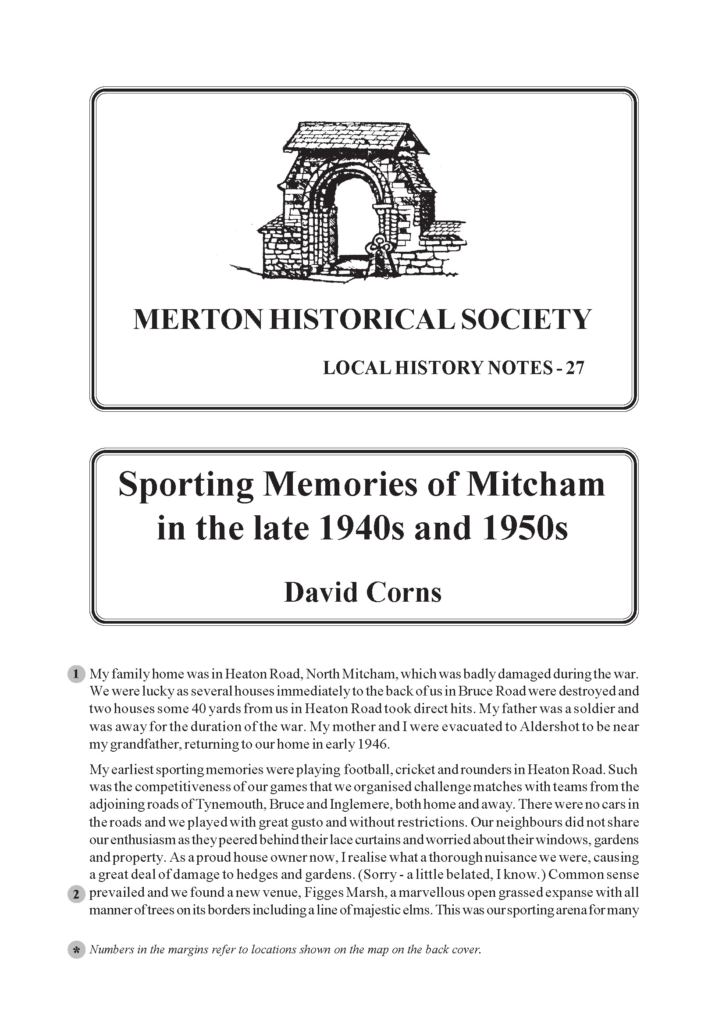
The author’s recollections of a sporting boyhood will strike a chord with many readers, though few will probably have managed to participate in and/or watch as much sport as David Corns. As a cub and then a scout, at primary and then grammar school, in informal ‘gangs’ and then in clubs, he played football, cricket, rounders and Korfball, as well as swimming, running and long-jumping. He watched fine cricketers on the Green and world-class athletes at the News of the World ground, and he writes about it all with enthusiasm and total recall.
Stane Street in Upper Morden
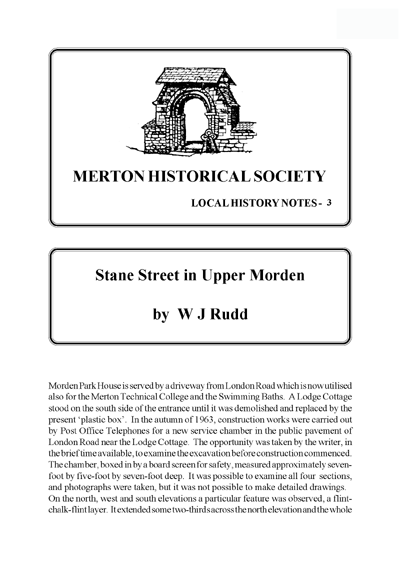
In the autumn of 1963, construction works were carried out by Post Office Telephones for a new service chamber in the public pavement of London Road near the entrance to Morden Park. The opportunity was taken by Bill Rudd, in the brief time available, to examine and photograph the excavation before construction commenced. Chalk and flint layers appear to be authentic remains of the Roman road now known as Stane Street.
Textile Bleaching and Printing in Mitcham and Merton 1590-1870
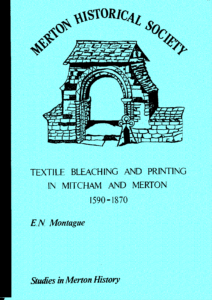
This detailed study traces the history of the four major areas of textile bleaching and printing along the banks of the River Wandle within the ancient parishes of Mitcham and Merton – Willow Lane, Ravensbury, Phipps Bridge and Merton Abbey.
This volume has long been out of print, though copies can be consulted at Merton Heritage & Local Studies Centre.
However, the author has updated the information relating to the three Mitcham sites and has included this in the relevant volumes of Mitcham Histories.
The ‘Amery Mills’ of Merton Priory, the Copper Mills and the Board Mills
This booklet covers the history from 1086 to the 1990s of the site whose principal feature today is a Sainsbury’s superstore. Situated on the Wandle, it was used successively for the production of flour, dyestuffs, copper and paper.
The Archaeology of Mitcham to AD 700
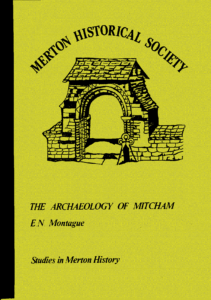
This study brings together what is known of the archaeology of the area from earliest times until the end of the Dark Ages. The Anglo-Saxon cemetery at Mitcham is well-known, but the prehistoric and Roman discoveries are also worthy of mention.
This study was published by Merton Library Service on behalf of Merton Historical Society and is now out of print. Copies may be consulted at Merton Heritage & Local Studies Centre on the 2nd floor of Morden Library.
The Bridges and Roads of Mitcham
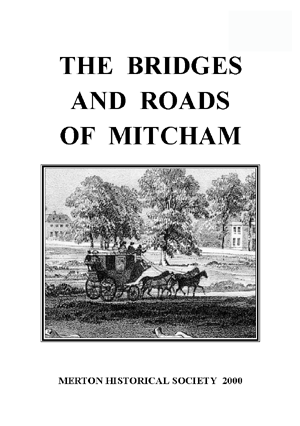
Bridges and Roads deals first with the construction and maintenance over the centuries of Mitcham’s bridges over the Wandle and the Graveney, and then with the history of its turnpike highways and its parish roads. The last section looks at some of the more romantic aspects of road travel in the past.
The Historic River Wandle 1: The Merton Section
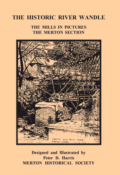
This book is the first of a series portraying the history of the River Wandle in pictures, with a brief account adjacent to each illustration. The sites depicted are:
Garratt Copper Mill, Copper Mill Lane, Wimbledon
Connolly’s Leather Works, Wandle Bank, Wimbledon
The Merton Copper Mills, Merton High Street
Merton Abbey Print Works, Merton Abbey
William Morris Works, Merton Abbey
The Gateway in the Wall, Merton Abbey
Bennett’s Calico Printing Mill, Merton Abbey
Liberty Print Works, Merton Abbey
Liberty’s: The Wheel House and Colour House, Merton Abbey
The Angler’s Bridge, Merton Abbey
The Historic River Wandle 2: Phipps Bridge to Morden Hall
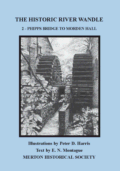
This book is the second of a series portraying the history of the River Wandle in pictures, with a brief account facing each illustration. The sites depicted are:
William Harland & Son Ltd, Phipps Bridge Road
Everett’s Place, Phipps Bridge Road
Wandle Villa, Phipps Bridge Road
The ‘Steam Washing Factory’, Phipps Bridge Road
Bunce’s Meadow, Morden Hall Park
Morden Hall, Morden Hall Road
The Snuff Mills, Morden Hall
Morden Cottage, Morden Hall
Morden Cottage, Morden Hall
Morden Lodge, Morden Hall Road
The Barn, Morden Hall Park
The Historic River Wandle 3: Ravensbury to Mill Green
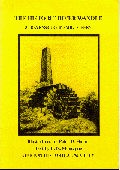
This book is the third of a series portraying the history of the River Wandle in pictures, with a brief account facing each illustration. The sites depicted are:
Ravensbury Mills
Ravensbury Print Works
Ravensbury House
Harold F Bidder’s ‘Ravensbury Manor’
Mitcham Grove
Richard Glover’s Morden Snuff Mill
The wheel at Mitcham Fibre Mills
John S. Deed & Sons’ Eagle Leather Works
Watercress beds near The Willows, Willow Lane
The mill house, the Logwood Mills, Willow Lane
The ‘Fisheries Cottage’
The Influence of Merton Priory
In this study Richard Chellew uses key documents relating to Merton priory to explore its reputation for piety, its roles as a training ground for saints and as a centre of learning, its political influence and its key role in helping to shape the English legal system. This booklet is illustrated by full-colour copies of the splendid facsimiles of the original documents specially prepared by a calligrapher from the College of Arms.
The Landmark Case of British Railways Board v Herrington
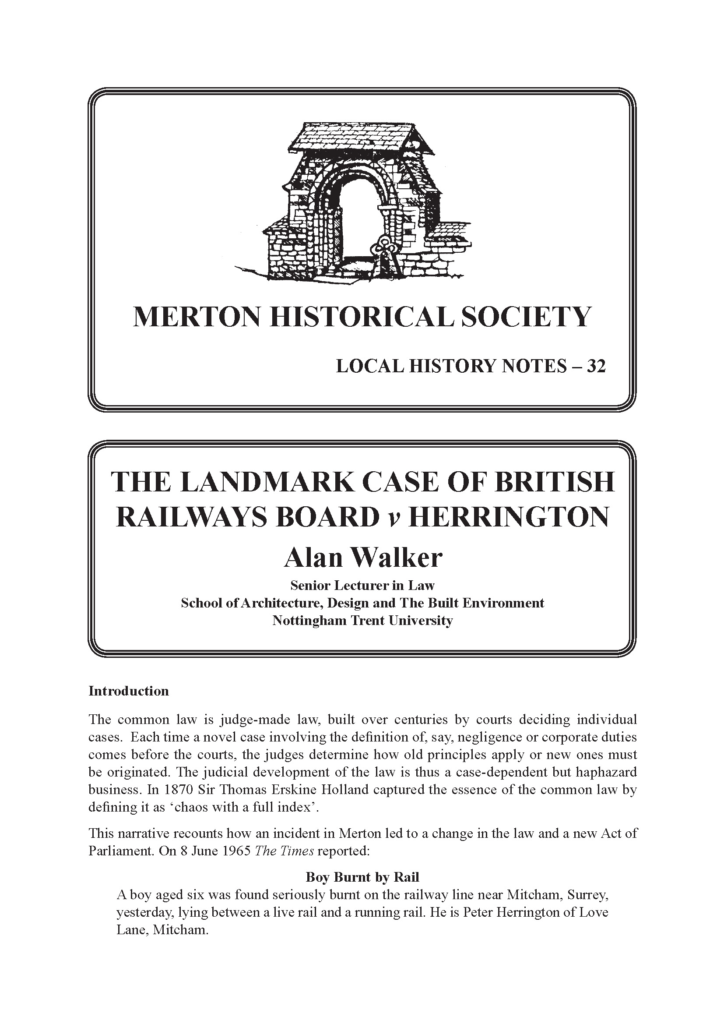
When six-year-old Peter Herrington, from Love Lane, Mitcham, was seriously burnt on the railway line between Mitcham and Morden Road stations in June 1965, he made legal history. In this study, Alan Walker, senior lecturer in law at Nottingham Trent University, explains the background to, and the implications of, this important case, which led to a change in the law and a new Act of Parliament.
The Life of Guy of Merton
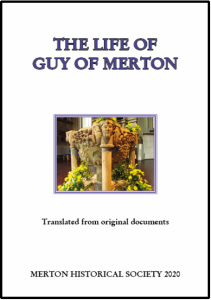
The first parallel edition and translation of the contemporary account of the life of Guy of Merton, one of the earliest canons of Merton and later founding prior of first Taunton and then Bodmin, together with an introductory essay.
The Life of James Lackington, Bookseller, 1746-1815
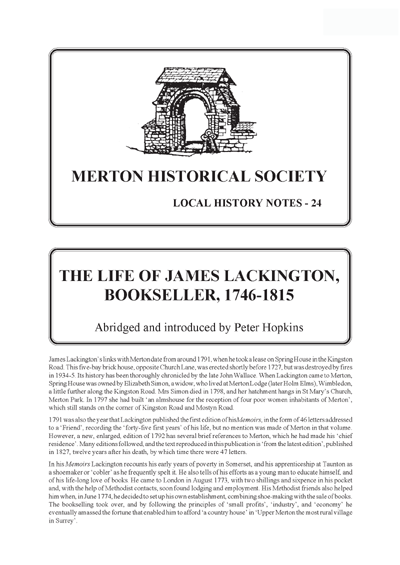
James Lackington, the 18th-century bookseller, developed trading policies that were to bring him both fame and financial success. His terms became (unusually for the time) cash only; he sold at rock-bottom prices, and he was a pioneer dealer in large quantities of publishers’ ‘remainders’, which he sold at cut price. He also bought up whole libraries, and was soon issuing catalogues of 30,000 volumes and more.
By 1791, when his annual profits were £4000, and he wrote the first version of his Memoirs, he had installed himself with his wife Dorcas in a country house in Merton and set up his own carriage. This was Spring House, the early 18th-century house in Kingston Road, which was demolished in the 1930s and replaced by the Spring House flats.
The Mitcham That I Remember 1927-1941

Iris C Marshall, née Overy grew up at the Ward paint factory in Windmill Road, Mitcham, and describes life in the area mainly during the 1930s.
The Now and Hereafter Poor:
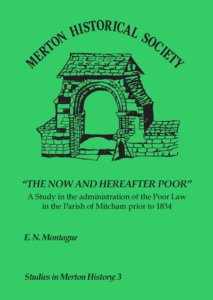
A study in the administration of the Poor Law in Mitcham prior to 1834
Chapters cover – Practice in Mitcham till 1720; The Poor Law in Operation in the Eighteenth Century: (a) Apprenticeship, Settlement and Out-relief, (b) The Workhouse; The Parish Officers and the Poor Rate; Wartime Stresses; Post War Depression and Poor Law Reform
A private Act of Parliament, obtained in 1816 “For the better assessing and collecting the Poor and other Parochial Rates in the Parish of Mitcham, in the County of Surrey” is reproduced in the Appendix.
The Parish of Merton in 1844: The Tithe Apportionment Map
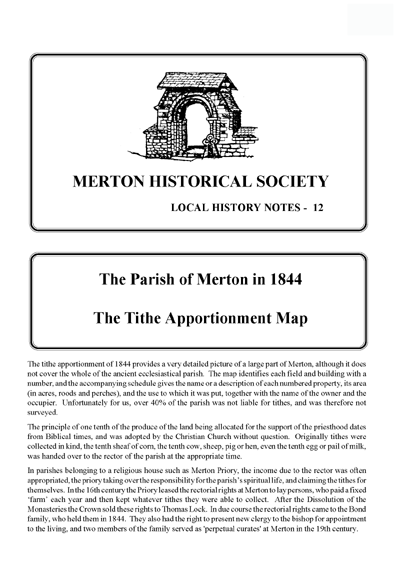
The tithe apportionment of 1844 provides a very detailed picture of a large part of Merton, although it does not cover the whole of the ancient ecclesiastical parish. The map identifies each field and building with a number, and the accompanying schedule gives the name or a description of each numbered property, its area (in acres, roods and perches), and the use to which it was put, together with the name of the owner and the occupier.
 MERTON HISTORICAL SOCIETY
MERTON HISTORICAL SOCIETY 